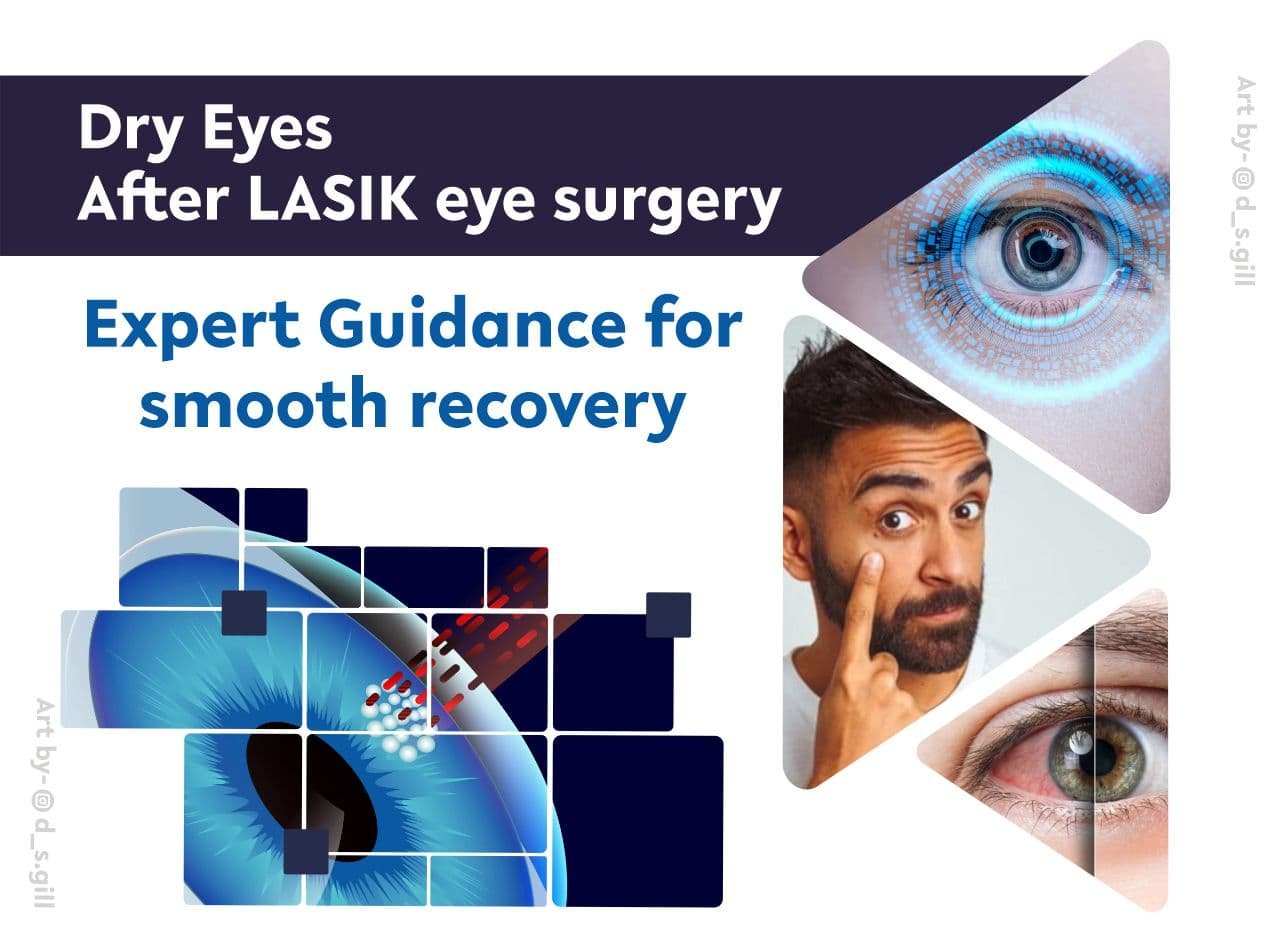Adults who consider LASIK surgery often worry about developing dry eye conditions afterward. In fact, this is usually the first question people ask about LASIK surgery. While LASIK remains the preferred choice among all modern vision correction methods, with results that are both precise and life-changing, associated risks like dried eyes can sometimes be a temporary problem on the way to better vision. What are dry eyes? and How can LASIK trigger or worsen any existing dry eye condition? We consulted the best eye surgeon in Bathinda, Dr Kashish Gupta, to get an expert opinion on DRY EYES AFTER LASIK. This blog, written after taking inputs from both eye experts and patients, is meant to help you understand, manage, and get over dry eye conditions after LASIK.
Why does Dry Eyes happen After LASIK?
Causes of Dry Eyes!
When LASIK surgery is performed, a small flap is created on the surface of the Eye. This flap has the potential to momentarily impact the nerves that are responsible for the production of tears. This impact can lead to a decrease in tear production, which can result in symptoms of dry eyes. However, this effect is typically very transitory. As a normal part of the healing process, the majority of patients will experience this, with symptoms often reaching their peak within the first few months after surgery.
Common Dry Eye Symptoms to Watch For!
Recognizing the symptoms of dry eyes is crucial for effective management. Common signs include:
- Redness and irritation in the Eye
- Sensation like something is stuck in the Eye
- A gritty or scratchy sensation in the eyes
- Higher Sensitivity to light
- Blurred vision that improves with blinking
Prevention is the cure, and it best applies to dry eyes. The adopted way to treat dry eyes starts well before the LASIK surgery. People who already have dry eyes should talk to their eye doctor about this because treating and controlling these symptoms can help people do better after LASIK. Before surgery, your doctor may tell you to start using eye lubricants /artificial tears or omega-3 supplements to treat dry eyes and improve the quality of your tears and your eye health.
Post-LASIK Care and Management of Dry Eyes
- Artificial Tears
Using artificial tears liberally is one of the mainstay treatments for treating dry eyes following laser eye surgery. These lubricating eye drops enhance your natural tear production to offer momentary relief. You must adhere to the particular type and frequency of use that your surgeon recommends.
- Environmental and Lifestyle Adjustments
Simple changes in your environment and lifestyle can significantly alleviate dry eye symptoms. These include:-
- Staying away from direct airflow from fans, heaters, and air conditioning.
- Taking breaks often to rest your eyes during tasks that need long-term focus, like computer work.
- Staying hydrated by drinking lots of water.
- Using a humidifier in dry places to add moisture to the air.
Treatments for Dry Eye Conditions
For some Dry Eye patients, additional treatments may be necessary to manage more chronic dry eye symptoms. Some of these are prescription eye drops that make more tears, temporary punctual plugs that stop tears from draining, and light therapy and eyelid massage methods that help glands work better. If you need help, your eye doctor will walk you through these choices.
Dry Eye Syndrome: Long-Term Outlook and Recovery
The good news for patients is that most post-LASIK dry eye problems are transient. Most patients see noticeable improvements during the first half-year following surgery, and these gains continue to increase gradually over time. Throughout your rehabilitation, it’s critical to be in constant contact with your eye care professional so they may modify your treatment plan in response to how your symptoms develop.
DRY EYES AFTER LASIK: Blog Summary
After LASIK, having dry eyes can be a short-term problem on the way to clear vision. Patients can feel confident about this part of their healing as long as they understand it, take charge, and get help from qualified eye professionals. Remember that the management of dry eye conditions is a constant effort with the advice of your eye doctor to bring you the best vision possible after LASIK. “You’ll have not only better vision but also a better quality of life if you strictly adhere to the advice of your eye doctor and stick to your treatment plan,” points out Dr. Kashish Gupta, widely regarded as the best eye doctor in Bathinda Punjab.

